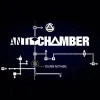Take a look inside 3 images
Antichamber
Pros: Solving Antichamber's puzzles proves thrilling.
Cons: Sometimes the solution is so "out there" that figuring it out devolves into tedium.
Bottom Line: The non-Euclidean puzzles are sure to blow students' minds, but the trickier puzzles will definitely frustrate some students.
In a math class, explore the history and thinking behind Euclidean geometry, and then get students to detail (as a group or individually) the ways Antichamber deviates from this model.
In a level design or game programming class, explore the ways Antichamber was constructed both at a spatial/architectural level and a coding level. How is it even possible to design a game like this? Getting students to sketch out a "map" of a custom level of Antichamber, especially after they've done similar activities for more traditional games, could be fun and get great discussion going. In a philosophy class, discuss the "point" of the game, the ending, and the "meaning." Why might breaking down physical and spatial expectations in a game world be important? What does this make players feel? How might the design of the game influence future games?
To get students really thinking in a more game-focused classroom or after-school setting, pair Antichamber with fellow indie gem Braid, which innovates puzzle design temporally just like Antichamber innovates spatially. What might a game that does both look like? Feel like?
The greatest achievement of Antichamber, a first-person puzzle game, is how it breaks free from three-dimensional space. Its spatial puzzles force minds to think outside of the Euclidean geometry box, setting aside a whole pile of assumptions about space we take for granted. The goal -- like other similar games -- is to reach the exit, but the various levels, rooms, and passageways don't follow the ordinary rules of spatial reality and can't be navigated in the normal way. Journeying around the world and solving puzzles is like tackling the most complicated Rubik's cube ever conceived, but from within the cube. And worse, the cube has its own completely impossible spatial logic. Take this one example: Where the player is at any time can change based on his/her movement -- walking forward doesn't necessarily mean the player will progress on a straight line. In this way, each level or area to be traversed initially seems impossible, and requires counterintuitive methods that defy rational thinking.
Progressing through this Escher-esque collections of puzzles within puzzles certainly teaches perseverance. Players will undoubtedly get stuck, and must think in ways they probably never have before to progress. It's not for students who have a hard time with failure or thinking creatively and critically at the same time. But for gritty, bright students it'll be a challenging experience certain to build key skills. Since it's an experience targeted at a mainstream audience, there's a lot resting in an educator's hands to figure out how to make it work and yield results in a classroom. Students won't necessarily be hitting on material aligned to geometry or science standards, but there's potential to make connections, especially for advanced high school students.












